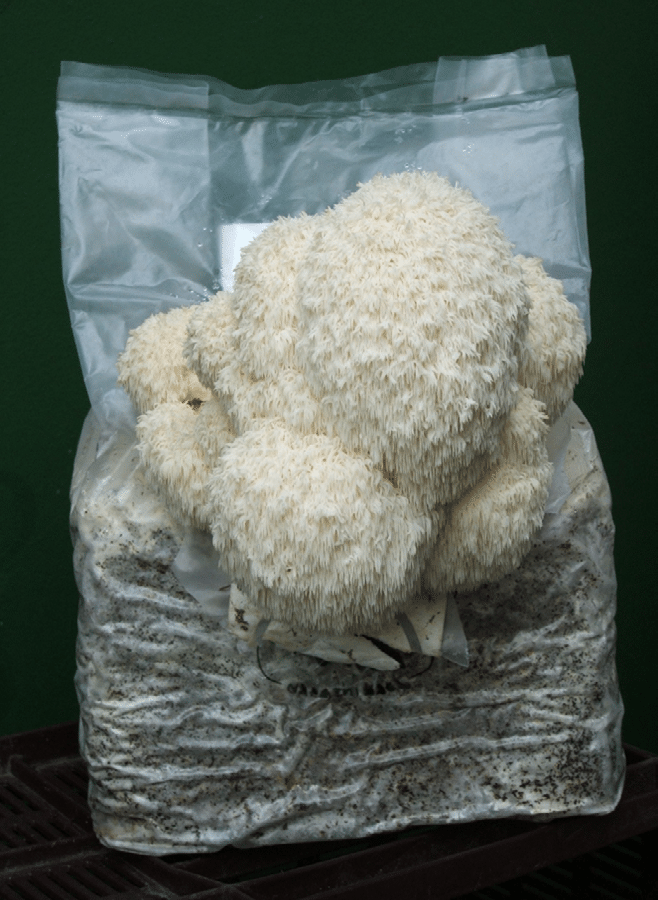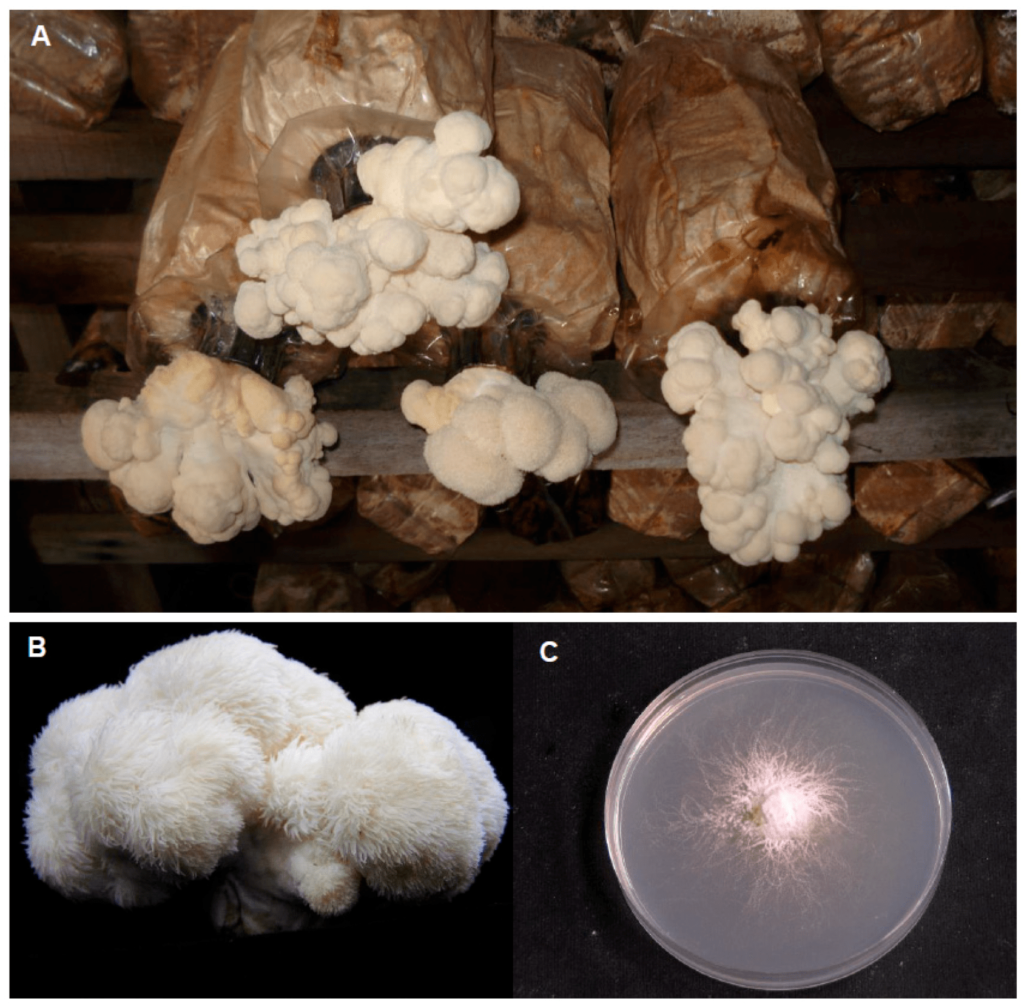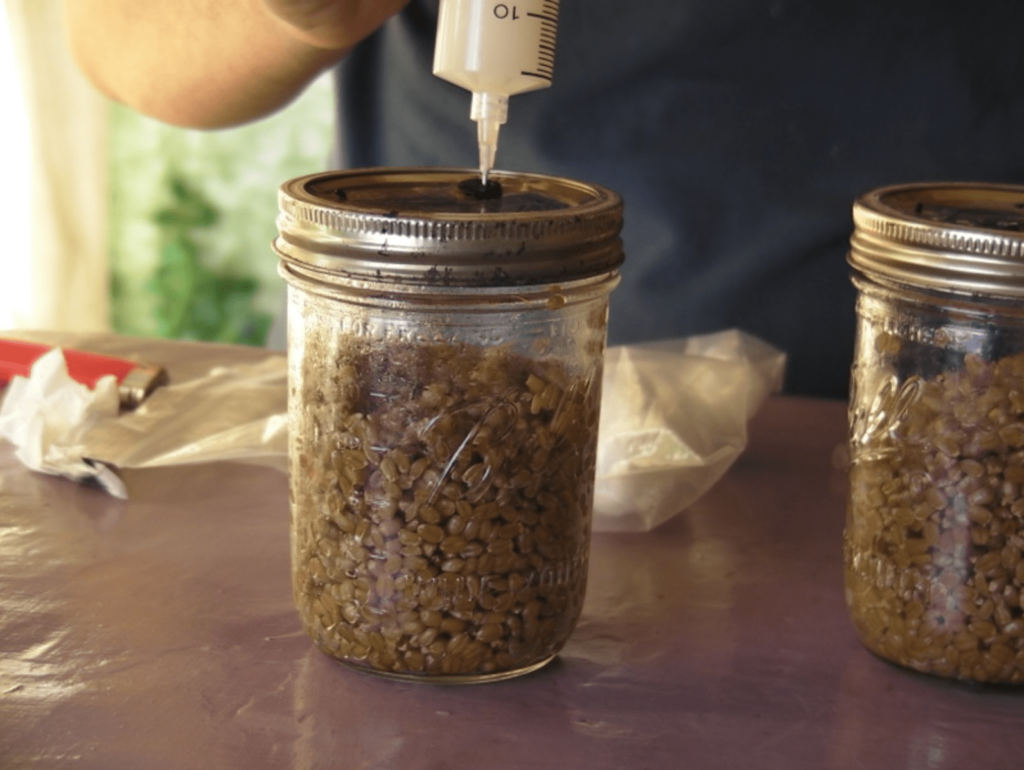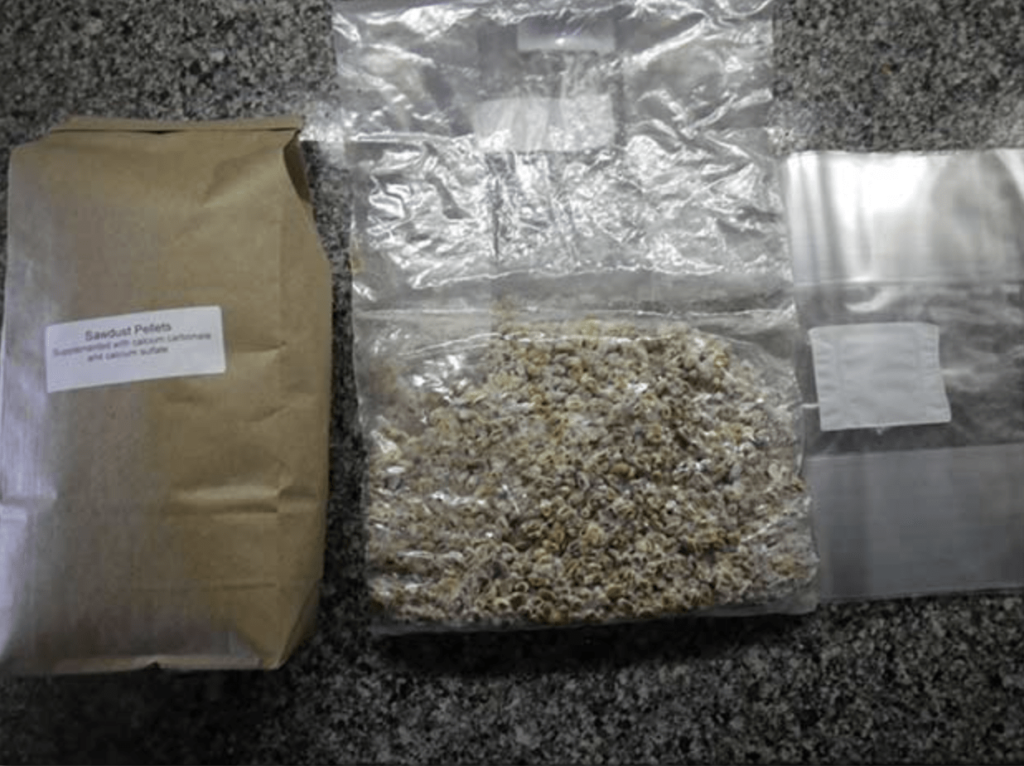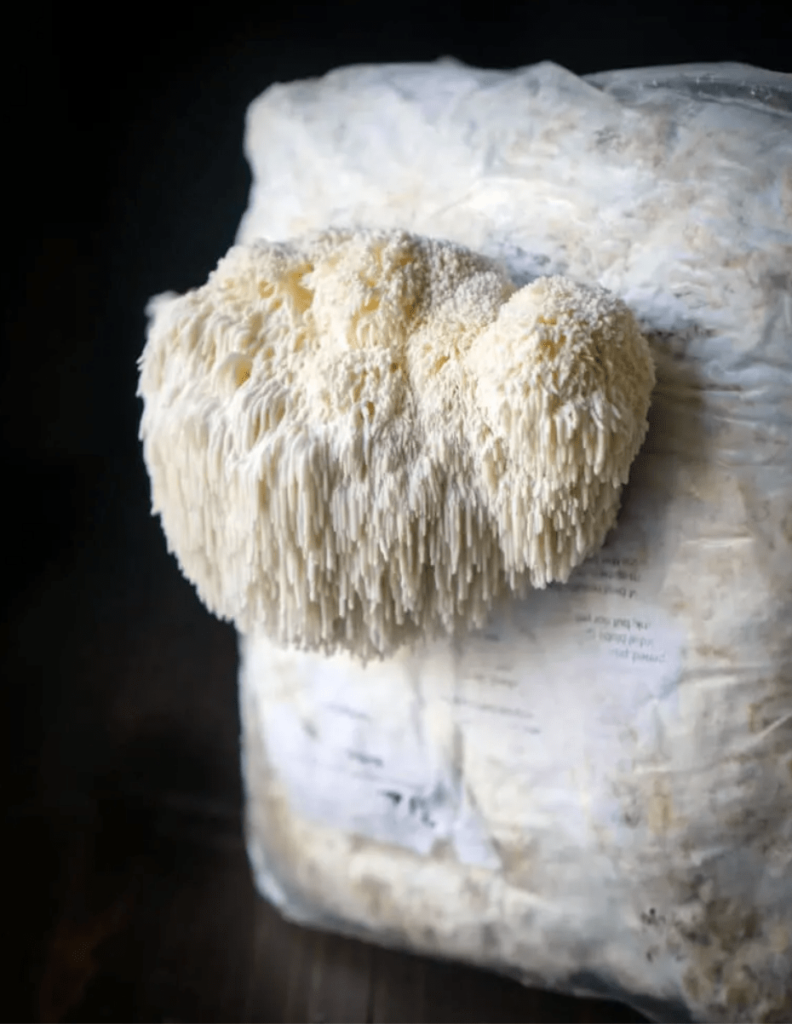Indoor Lion’s Mane Cultivation
Lion’s Mane Mushroom can be grown indoors using a lion’s mane grow kit, or in a DIY grow bag.
We’ll begin by teaching you how to use a grow kit, because it is the most popular and one of the easiest ways to grow your own Lion’s Mane. After that, we will show you how to make your own DIY grow bags.
Lion’s Mane Grow Kit
Grow kits typically come as a block in a plastic covering or bag to keep humidity inside with the substrate. The substrate is a combination of mycelium and sawdust, and it needs oxygen and humidity to fruit.
Equipment:
– knife
– spray bottle with water
– turkey bag (humidity dome)
– scissors
To grow your lion’s mane grow kit, cut a couple of X-shapes or a straight line across the bag, wherever you’d like Lion’s Mane to grow.
Make a dome to go over your kit. With a turkey bag, cut 16 evenly placed holes and place over your lion’s mane kit. Mist the inside of your plastic dome once daily and replace over the block. Ensure that you keep the grow kit out of direct sunlight.
Lion’s mane mushrooms grow best in temperatures between 55°F and 75°F. After about a week or two you’ll notice your Lion’s Mane pinning. Don’t forget to mist!
When the Lion’s Mane is still young, you’ll notice there are not as many of the spines as a more mature mushroom. Immature lion’s mane fruiting bodies may begin as a light pink color and will turn white closer to harvest. Harvesting is best done four to seven days after pinning occurs. When the moment of harvest arrives, you can either cut them off with a knife or twist them with your fingers.
Lion’s mane grow kits will generally fruit at least twice, and produce about a pound in their lifetime.
How To Make Lion’s Mane Grow Bags
This process is more in-depth and complicated than using a grow kit. This is also the most engaging and interesting way to grow Lion’s mane.
Equipment:
– culture grown or liquid culture
– large mason jars and tops (grain and mycelium)
– tub or bucket (mixing substrate)
– bags (substrate combo)
– hardwood pellets (see recipe below)
– wheat bran (see recipe)
– water (see recipe)
– pressure cooker at 15 psi
– spray bottle with water
Optional
If you’re familiar with lab methods, you can grow your own culture on plates and store them for use when you want to grow some Lion’s Mane. You can get liquid culture online and grow it on agar, and then cut a wedge of the culture and drop it into the grain jar.
Part 1 – Making Grain Spawn
Add your lion’s mane culture to sterilized grain (rye, wheat, millet, or even popcorn). Your grain spawn may have some fruiting which can be broken up and added to your substrate.
Part 2 – Adding Grain Spawn To Substrate
Use hardwood sawdust and bran as a substrate for your lion’s mane. For every five-pound block, use roughly five cups of hardwood fuel pellets and one and a quarter cups of wheat bran, as well as about 48 ounces of water (1.4L). Mix the ingredients and put them into a pressure cooker for two and a half hours at 15 psi.
Other combinations can be used to make substrate for lion’s mane, but after much trial and error we have found that this ratio of hardwood and bran produces larger fruits and greater yields when growing indoors.
Part 3 – Inoculate and Colonize
Once you’ve consolidated your substrate with the grain spawn, the mycelium will colonize through it, and you’ll see feathery mycelium throughout your grow bag. You’ll know it’s fully colonized when there are small fruits starting to form on the top of the substrate.
Step 4 – Cut and Grow
Cut the top off of the bag, fold the top of the bag around the growing block, and feel free to tape or rubber band the bag closed.
Fold the top of the bag around the growing block, and feel free to tape or rubber band the bag closed. Cut a couple of X-shapes into the front of the bag, and cover with a humidity tent. Lion’s mane mushrooms can also be top fruited.
Mist inside the humidity tent once daily. In a few days, you’ll see your mushrooms popping through.
Lion’s Mane enjoys it a bit cooler, so if you can grow at a temperature of approximately 65°-75°F and a humidity of about 90-95%, you will achieve the best results.
Step 5 – Harvest Time
In a few weeks, your Lion’s Mane will be ready to harvest. If the fruits are on the smoother side, you may want to wait to pick these until they have long teeth. If you prefer your Lion’s Mane on the denser side then, of course, you can harvest sooner.
You can choose whatever method makes you happy to harvest your beautiful fruit. One way is to slide your hand underneath the fruit and twist it off of the bag. If you prefer, you can use your knife and cut the fruit off the kit.
Step 6 – Not The End
Return the bag to your growing area and continue to mist daily, and you may receive a second flush of lion’s mane.
